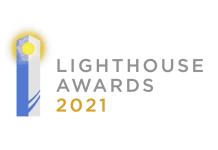
Check out how the Top 10 customer engagement trends for 2015 are shaping up in this new series. If you missed #4 last week, you can read it here!
One of the first lessons I learned as a loyalty marketer was this idea of the “aha moment.” My boss—the president of the loyalty program where I headed up marketing—intuitively understood that the only way that we’d grow exponentially was to truly deliver on the brand promise. His lesson to me was purely gut instinct, but my decade of quantitative analyses of program growth, engagement sustainability, and customer lifetime value more than validates his intuition.
Replaying his advice in more practical terms, the simple idea is to deliver some tangible element of value as quickly on in the program—and to as many people—as practical (operationally practical, technically practical, economically practical, brand practical).
Traditionally, we focused on speed of reward—essentially accelerating the accrual of points or miles or baubles or whatever so that the first reward threshold could be earned with fewer purchases. Not bad—relies upon the published earn-and-burn rules, but gives new members the ability to get there faster.
But what if we think differently? What if we deliver a win before the reward? This has some very strong appeal for both the marketer and the member. For the marketer, this benefit can be either published or unpublished depending on the profile (potential) of the customer or the season. For the member, it clearly demonstrates the benefits of membership while joining the program is fresh in his or her mind. The power of recency (engagement, purchases or rewards) has the largest impact on future value.
Some ideas we’ve seen that work really well are:
- Issuance of a meaningful bounceback offer after the first purchase. This would typically be unpublished and should be reasonably valued as a genuine benefit, not just a day-to-day sales incentive.
- Very low thresholds for an initial elite tier. Sounds like it could devalue a tier structure, but the reality is that a first elite tier with lighter benefits builds very strong bonds to brands.
- Social-driven rewards. Most loyalty playbooks call for member-get-a-member capabilities. We’re pretty confident that the ROI of investing in early referral programs is among the best use of program funding (BTW, watch the fraud, but there are ways to address that).
What we do not suggest is over-priming the enrollment call to action. Some programs have experimented with “day of” first purchase incentives. We’ve seen it work well in limited campaigns, but over the long run, really dilutes the quality of the membership base.
The bottom line is that rewards do matter to the people that join loyalty programs. According to Forrester Research, the vast majority of loyalty program members never make it to the top tiers of rewards. Focusing on early wins not only allows a higher percentage of customers to benefit from the program, it also sets customer on a stronger path to actually make it to the top.





